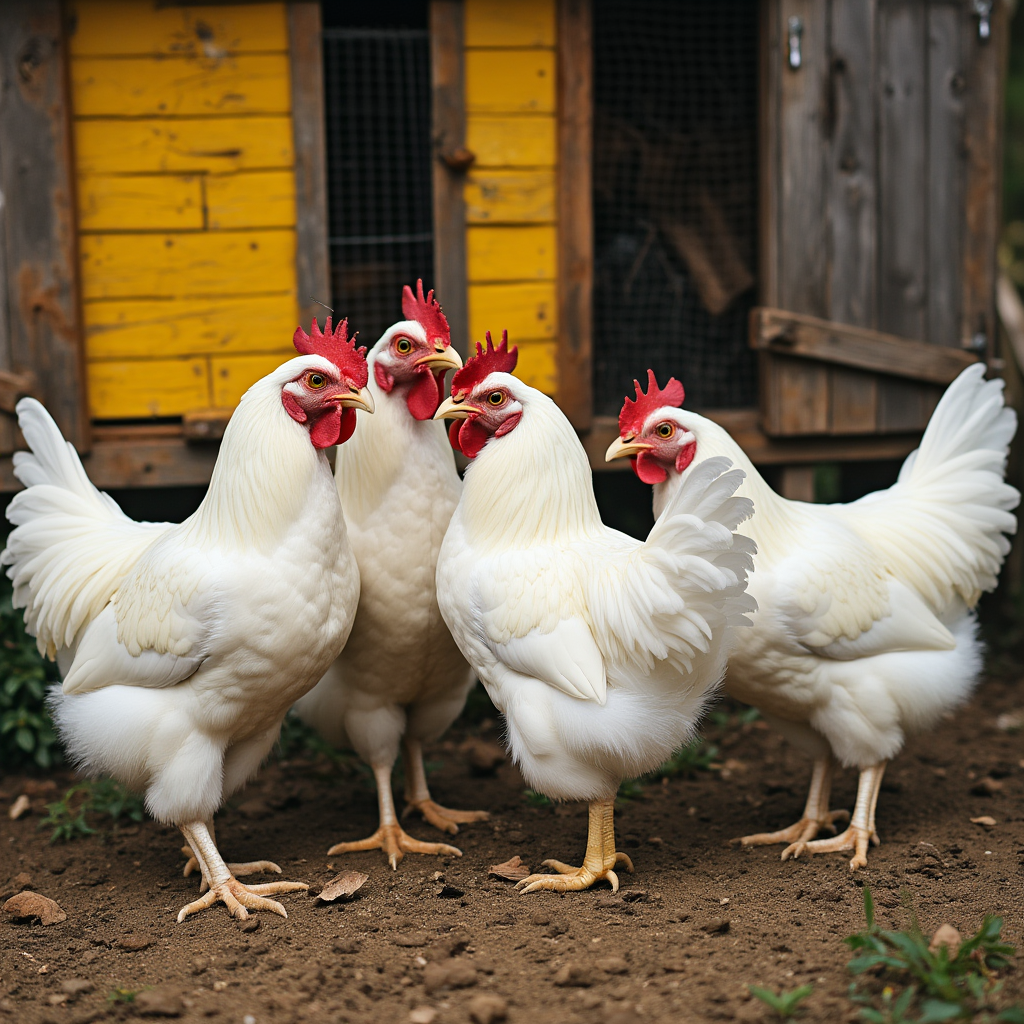
Leghorn chickens have a cool story, hailing all the way from Italy. Originally, these vibrant birds made their way from the sunny climates of Tuscany to the States back in the 1800s. That feel-good immigrant tale helped them grow into a poultry powerhouse worldwide, especially gaining fame for their superb egg-laying abilities.
These birds aren’t shy about showing off their distinctive flair. Known for their proud, upright stance and that striking white plumage, Leghorns might just be the supermodels of the chicken world. Plus, with those lively red combs and wattles, they add a splash of color wherever they roam. Whether in backyards or sprawling farms, Leghorns are easily recognized and loved for their unique look and resilience.
It’s not just about looks with these chickens. Their adaptability across diverse climates and strong foraging abilities make them a hit for poultry lovers everywhere. From the backyard in Ohio to large-scale operations in Asia, Leghorns hold a top spot in the hearts of farmers and hobbyists alike.
Leghorn chickens play a pretty big role in the poultry industry, thanks to their prolific egg-laying capabilities. Farmers dig them not just for their reliability but also for their efficiency. This breed’s knack for turning feed into eggs effectively is almost legendary, keeping the breakfast tables stocked and producers smiling.
Characteristics and Care of Leghorn Chickens
Leghorns are not just pretty faces; they pack some unique traits that make them stand out in the coop. They come in several variations, with white being the most famous, but you can sometimes spot a buff, black, or brown too. Their slim but muscular build and sharp eyes give them an alert look, like they’re always ready for anything.
When it comes to meal times, Leghorns perform best on a balanced diet rich in proteins, vitamins, and minerals. Like many champion athletes, they’re big on energy. Offering varied grains, greens, and a constant supply of clean water sets them up to thrive.
Leghorns appreciate their space and a cozy, well-ventilated coop. These active foragers love to roam and explore, so a safe, open area is their happy place. Good shelter keeps them content and productive, protecting them from harsh weather and predators.
Keeping an eye on their health means spotting any signs of common ailments early. Watch for respiratory issues or parasites, and maintain regular checks to keep potential problems at bay. Leghorns are generally hardy, but proactive care keeps them in top form.
Benefits and Potential Challenges of Raising Leghorn Chickens
Choosing to keep Leghorn chickens often comes with a bundle of perks. These birds are phenomenal layers, frequently topping the charts with well over 280 eggs per year. Their white eggs are not just abundant; they’re consistently high-quality and sought-after in markets everywhere. This makes Leghorns a superb choice for anyone focused on egg production, whether at home or in commercial operations.
Leghorns boast a spirited temperament. They’re active and curious, always up to something interesting. For newcomers to chicken-keeping, they’re usually a breeze to care for, given their hardy nature and ability to thrive in various settings. But hey, if you’re hoping for a snugly lap pet, you might want to manage your expectations — Leghorns are more about action than affection.
Like any stars, they do come with their set of challenges. Their active nature sometimes leads them to be flighty and harder to handle if they’re not used to human interaction from the get-go. Building trust takes a little patience, but once established, it sweetens the experience of raising them.
Managing their high-energy levels requires space for them to roam securely to prevent frustration or behavioral issues. Adequate fencing and protection from predators are non-negotiables to ensure they stay safe and sound. Paying attention to these aspects keeps your Leghorns happy and producing at their best.